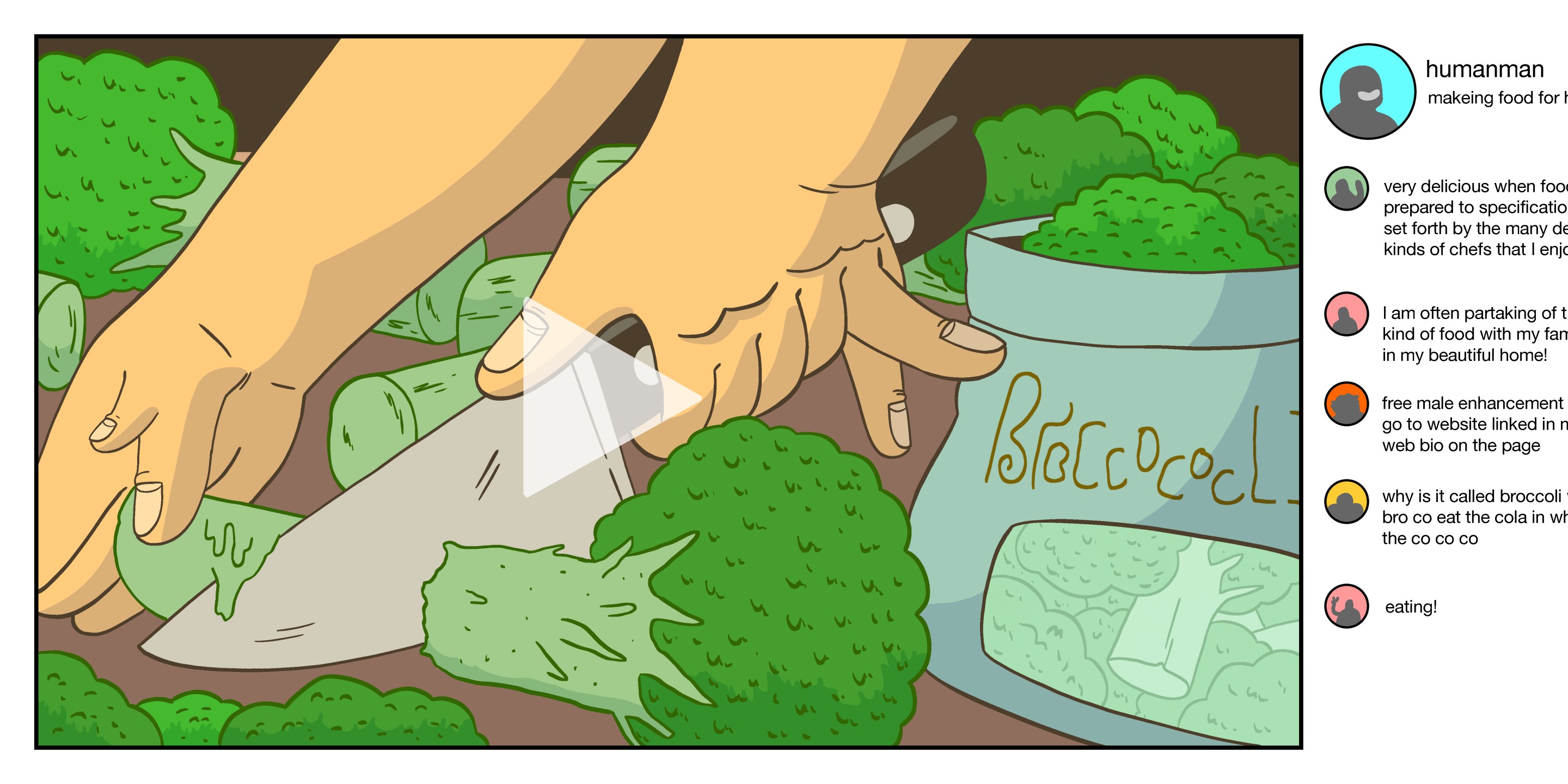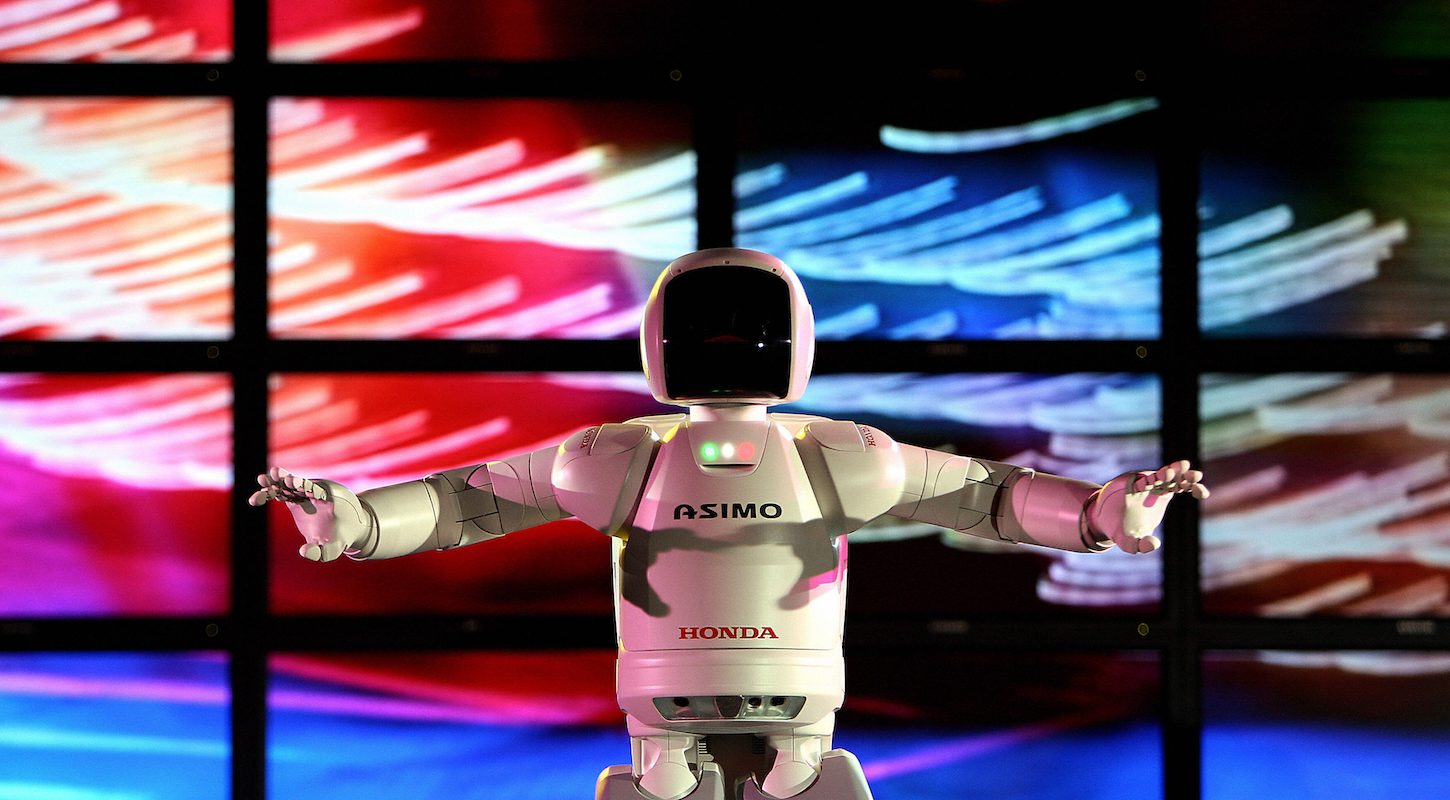It all started with a Messenger notification. In my inbox was a blurry image of a Tiramisu Cupcake sent by my grandpa, featuring a too-perfect frosting swirl with a thick coating of cocoa powder and a mysterious missing chunk from the cupcake liner that made me think: What kind of monster eats through the cupcake liner?
Like so many times before, the picture that he sent accompanied a short note: "Can we make this next time you're home?" Usually, I jump at the chance to plan a menu with my grandpa (my grandparents owned a restaurant for over 30 years, and in lieu of going to culinary school, I learned how to cook from them). This time, though, there was a problem: The post was very obviously AI-generated. When I called to tell him that the cupcake was AI—or "made by a robot," as he said—he had no idea. He has since sent me dozens more AI recipes, despite our conversation.
The pseudo-cupcake he sent, originally shared by something called Tasteful Recipes, had thousands of interactions from a mix of both real and possibly AI-generated accounts. Under the post, one of many potentially phony-sounding commenters exclaimed, "This is so cute! You two are goals. It really brightened my day." Her profile picture was overly smoothed, with a face that looked almost real, but with an uncanny hollow quality. The kind of hollowness that reminded me of when people were using AI to generate their headshots for LinkedIn.
Curious to know more, I clicked on the Tasteful Recipes page and began scrolling. Fifty or so posts later, I realized I'd only gone a few days into the feed. Tasteful Recipes had been pumping out AI-generated content at an unbelievable rate—about 10 to 12 posts each day.
I knew that AI-generated content had begun to infiltrate all corners of the internet, but I didn't know just how popular it was until I found my family interacting with it. I'm not sure if it was the algorithm picking up on my "interests" after I scrolled through Tasteful Recipes or I just hadn't yet noticed how prevalent it was, but my Facebook feed soon seemed overrun by AI recipes. Some of these sounded good—or at least normal—at a glance, like something called "Chicken Caesar Salad." But the actual instructions ended up being less "how to make this salad" and more "here are some buzzwords that resemble salad”—which, I'll add, were missing anchovies, notably a key ingredient in Caesar salad. Others were just bizarre, like a recipe for "Hot Cocoa Buffalo Chicken Gingerbread Dip with Marshmallow Topping," which had over 2,000 likes.
Perhaps the more alarming question is whether these AI-generated recipes even work. It's possible some may produce an edible dish, but more often than not, these recipes are missing some of the basic building blocks of how to make a meal. The ingredients might be poorly matched, or the instructions incomplete and indecipherable; worse still, the cook times and temperatures could be missing completely, leading to dangerously undercooked food.
We have seen this before. You may remember the time shortly after the rollout of Google AI Overview, when many users were reporting oddities, sharing their experiences with AI-powered misinformation like "According to the USDA, the safe minimum internal temperature for cooking [chicken] is 102 degrees Fahrenheit." (It's actually 165 degrees Fahrenheit.)
The key to creating a good recipe is all in the details—and the intent. As a recipe developer, I consider multiple factors when writing recipes: the historical implications of a dish, how to make techniques clear and accessible, getting the right flavor, and providing enough specificity to ensure everything is easy to follow. A good recipe involves a lot of research and multiple rounds of testing and refinement by someone who can adjust for taste, texture, and clarity. This process involves intuition, logic, heart, and sensory organs. Show me an AI that can taste salt!
For many people—especially those from older generations like my grandparents—these recipe pages seem to offer not just a place for meal ideas, but entertainment and a sense of connection. Maybe that's why so many of these recipe pages exist: not for visitors to get recipes to actually cook, but to kill time in the endless scroll where so many of us spend our time.
Food posts of overly gradient "Billion Dollar Biscuits" and mushy-looking "Chicken Alfredo Bliss" regularly go viral on Facebook, often generating thousands of likes and comments. As I dug deeper, I found that many Facebook pages dedicated to cooking now seem to be filled with AI-generated posts that are speaking to an audience almost entirely made up of bots. The posts and profiles share common telltale signs suggesting they're not real: recipe photos with odd details, like a misshapen piece of pasta or a comically large garnish missing a shadow, being commented on by avatars with smoothed edges and hollow eyes, spouting nonsensical mush that often has nothing to do with the post itself.
The pages seem to be part of an elaborate web of fake profiles and bots purposefully designed to boost interactions and create the illusion of popularity. One thing does seem clear: The goal of many of these bots is to drive real user engagement. It could mean something as simple as getting real people to click on an Amazon ad, or orchestrating a long game to carefully tilt the results of a national election through disinformation.
It's not difficult to find an entire ecosystem of creators who specialize in teaching others how to mass-produce this content. On platforms like YouTube, there are a growing number of tutorials that explain how to create fake Facebook pages and food blogs using AI-generated content. This new genre of how-to outlines step-by-step processes for building networks of fake profiles, automating engagement, and generating viral content—all in the hopes of helping people maximize their passive income.
The process goes a little something like this: A creator walks you through how to use AI tools like ChatGPT, then shows you how to mass-produce these pages with articles and images, emphasizing that keywords like "easy" and "simple" equate to money in this space. I'd thought just maybe there might be some innovative baseline strategy for generating content, and ideas for the types of recipes and blog posts to create, but they are—from start to finish—entirely using AI or flat-out ripping content from elsewhere online. If a recipe doesn’t come from ChatGPT, it's stolen from already-viral posts on Facebook or Pinterest. In a tutorial titled "How to Turn AI Images Into $546/Week" (with a clickbaity "mind blown" emoji), the creator walks you through how to generate dozens of Thanksgiving recipes (and blog posts) within minutes by asking ChatGPT for the ideas and then funneling that through SEOwriting.AI to generate the recipes, text, and photos.
However real the food and recipes might incidentally be comes second to the mechanics of getting clicks, likes, and shares. Creators aren't taking a moment to read or check any of this work, the way anyone would when testing out a recipe. The goal is simple: mass-generating content to populate sham blogs as fast as possible. These AI-generated food pages aren't just silly experiments, they're businesses—like the rest of food media. By generating high-click content and using algorithms to mimic the viral successes of real food blogs, the accounts accumulate display-ad revenue and further clutter search results with garbage. It's a machine designed solely to grab attention and profit; food was never the point.
In some ways, this feels like an unfortunate but natural progression of the internet. Food media, like the rest of the media industry, has been devolving into a race for clicks and views for the sake of profit over the past few decades. The relentless demand for clicks drives digital outlets toward basic headlines crafted to appease algorithms rather than an audience looking for something to eat. As AI continues to take over the internet, machine-generated content better mimics actual human endeavors, thanks to large media companies selling their content for use in training AI tools.
All this does is allow machines to learn and recycle the same food buzzwords over and over again—food blogs created by real people and AI both seem to love a dump cake—which leaves less room for creativity. These deals are no different than the quick-buck schemes behind the viral AI food blogs: They all contribute to the further devaluation of quality recipes and food writing, ultimately shutting out chefs, recipe developers, and readers, all left sifting through the same, cookie-cutter mush devoid of thought, originality or simple flavor.
The best we can say for now is that at least it is relatively easy, at least for savvier people, to detect AI-generated food content. But it's only going to get more sophisticated. The same forces that have made it harder to separate disinformation from facts are now making even the most basic facets of life worse. For every promise from the tech industry that AI can improve our lives, there comes a cost, sometimes as big as contributing to the destruction of our planet and at others just the casual ruin of our everyday routines.
The problem isn't just AI mass-produced recipes that may not even work. It's that people like my grandfather don't even know when they're interacting with artificial content anymore. What is lost when something as human as cooking food is mediated by artificial intelligence? The very act of nourishing our bodies, minds, and community through food is subordinated to the nebulous rewards of a couple hundred fleeting likes on some gunky "Marry Me Chicken" recipe. We sacrifice the rituals and communal ties behind recipes, leaving us with a hollowed-out, clickbait version of something that should be fundamental, maybe even exclusive, to being human.






